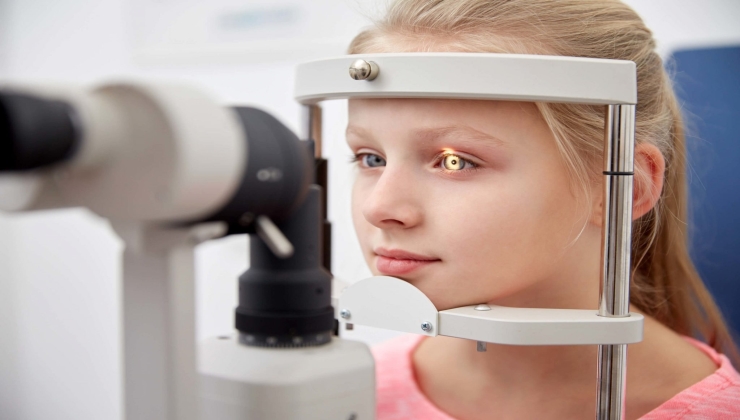In the field of eye health, IOP measurement is a very essential aspect in diagnosing and also managing conditions like glaucoma. In this guide, we will look into the many different ways of measuring eye pressure and discuss why IOP is so very important as well as understanding the importance of having accurate measurements. An eye doctor, Katy will address all of your fears while taking an eye test.
Therefore, let us take a look at the different methods adopted by the eye doctors to measure intraocular pressure and understand this vital aspect of ophthalmology.
What is Eye Pressure?
Before we discuss the measurement methods, let’s shed some light on eye pressure and why it is very important. Eye pressure is defined as the intraocular pressure, or the pressure within the eye produced by the aqueous humor – a clear fluid that occupies the anterior portion of an eyeball. The good eye pressure is very necessary to provide the adequate nutrition of the tissues around the surface and also preserve the shape of an eye.
Importance of Measuring Eye Pressure
The measurement of eye pressure is very essential for the diagnosis and also monitoring of a variety of eye diseases, especially glaucoma. Glaucoma is a classification of eye diseases that can affect the optic nerve and can lead to blindness if not treated. The measurement of supra-normal intraocular pressure is an integral part of the routine eye visits due to the fact that it is a major risk factor for the glaucoma.
Traditional Measurement Technique: Goldmann Applanation Tonometry
Goldmann Applanation Tonometry is a standard procedure for measuring the eye pressure using the tonometer. The tonometer gently touches the surface of the eye and flattens it slightly. Intraocular pressure is determined by measuring the force needed to flatten the cornea. This method is regarded as the gold standard.
Here’s how it works:
Topical Anesthesia:
Topical anesthesia is usually administered to the eye prior to the measurement to ensure the patient’s comfort.
Fluorescein Dye:
Fluorescein dye is applied to the surface of the eye in a small amount. This dye enables the tonometer to make the correct readings by outlining the applanation area, where the instrument touches the cornea.
Applanation:
The tonometer tip is gently placed on the cornea that flattens a small area. The illuminated flattened area is then exposed to a blue light.
Observation:
The amount of pressure needed to flatten this particular area is determined and also documented. For accuracy, this process is repeated again and again.
Although the GAT is known to be very accurate, it does require an experienced operator and may also be affected by parameters such as corneal thickness and also stiffness.
Other Tonometry Techniques:
Non-Contact (Air-Puff) Tonometry:
This technique applies a puff of air onto the cornea to determine the IOP level. Although it does not involve any physical contact with the eye, it is generally not as precise as the GAT and may also be influenced by many factors such as corneal properties and also patient cooperation.
Rebound Tonometry:
The principle of rebound tonometry is that a small, light probe hits the cornea and the force of the rebound is commonly used to calculate the IOP. This approach is very easy and does not need much patient compliance, making it appropriate for some groups.
Dynamic Contour Tonometry (DCT):
DCT quantifies the IOP based on the shape of the cornea under the deformation induced by a controlled force. It seeks to compensate for the corneal biomechanical characteristics that may influence the accuracy of the other tonometry approaches.
Home Tonometry:
Technology development has resulted in the development of home tonometry devices that enable the people to measure IOP outside the clinical environment. Though very convenient, these devices may not necessarily be as accurate as the professional measurements, and they should be used under the supervision of an eye care professional.
Significance of Accurate IOP Measurements:
Accurate IOP measurements are crucial for several reasons:
Glaucoma Detection:
Increased intraocular pressure is a major risk factor for glaucoma, a form of eye disease that can cause optic nerve damage and vision loss. Frequent intraocular pressure testing allow for early intervention and assist in identifying those who may be at risk.
Monitoring Treatment:
Continuous intraocular pressure monitoring is essential for glaucoma patients in order to monitor the effectiveness of treatment and make any required adjustments. Ongoing observation helps medical professionals understand how a patient is responding to their care and highlights any abnormalities that may require further attention.
Preventive Care:
As part of a comprehensive eye exam, standard intraocular pressure measures allow eye care professionals to identify manageable problems before they become more significant ones. These tests are important for identifying risk factors and possible glaucoma early on.
Bottom Line
An important factor in eye care, particularly for glaucoma, is intraocular pressure. Tonometry protocols vary in order to meet the demands of patients and clinical settings; the gold standard is Goldmann Applanation Tonometry. Precise measurements are necessary for the prevention of eye diseases. Regular exams empower people to take control of their eye health and help them preserve their vision for many years to come.

